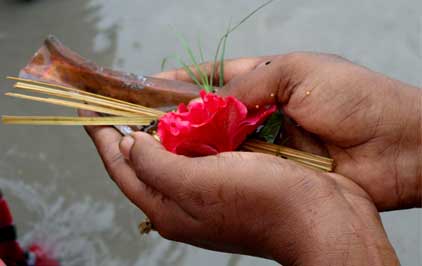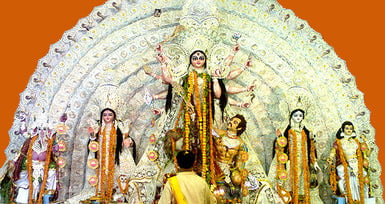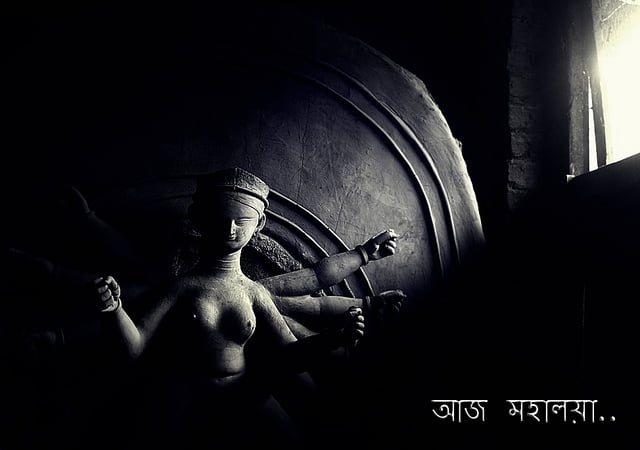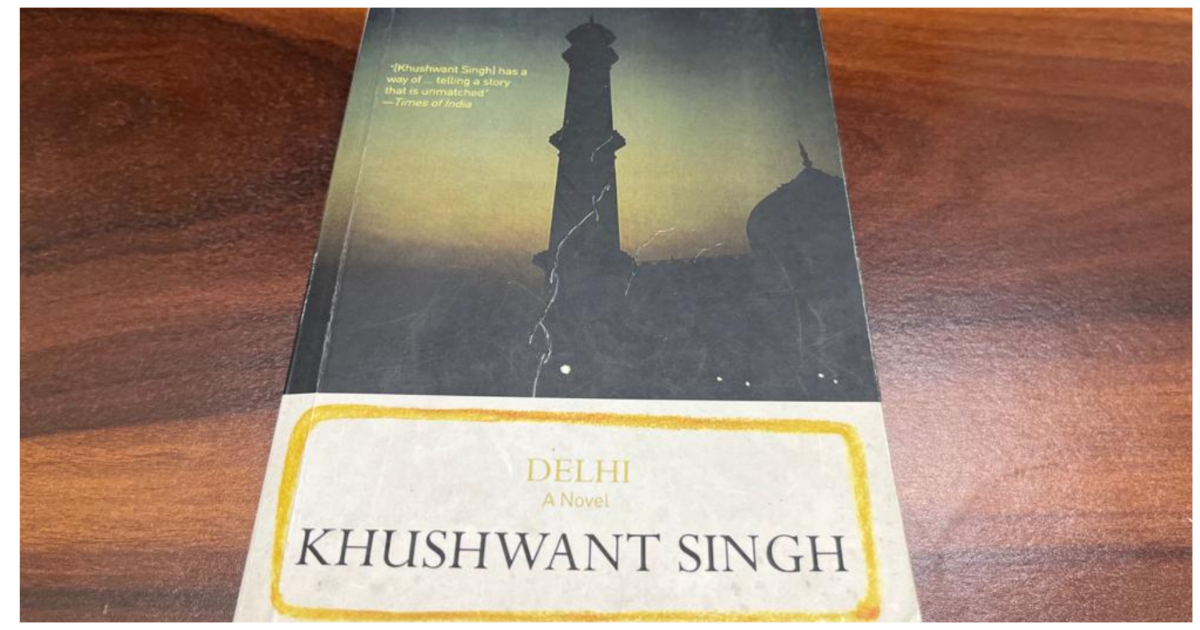By Sonakshi Kundu
The state of West Bengal in India comes alive in the month of September-October every year with the celebrations revolving around its most important deity, Goddess Durga. Over a duration of ten days, the Durga Puja festival marks the return of the Goddess from her heavenly abode to her maternal home along with with her children.
The oral tradition of relating the story of the Goddess became popular through a radio show that is played on the day of Mahalaya, which marks the forthcoming festival and the arrival of the goddess to her homeland.
The preservation of such oral traditions not only protects their original form but also adds to their age-old appeal, giving them a voice in the form of a widely popular radio show. The day’s festivities primarily revolve around this narrative, which has survived through generations and continues to thrive. The Mahalaya consists of songs, prose and dramatic tunes, which exemplify the role of the Goddess in defeating the evils of Mahisasur, the demon who threatened to destroy the Earth by overthrowing gods from heaven.

The narrative provides a backdrop for the annual ritual and gives life to the spirit of the festival. Mahalaya can be largely divided into three sections – the birth of Durga, destruction of the Earth and combating the demon, and, finally, the victory of good over evil. Like many other ancient oral traditions, myths and folktales have added to the creation of this epic form of narration. Mahalaya narrates the story of the creation of Maa Durga, raising questions on the significance of the Goddess as a warrior and a mother as it cuts through gender stereotypes, creating a new identity. Hindus observe Mahalaya by making offerings to their ancestors from last three generations.
This day is also observed as the first day of the nine-day-long Navaratri. The programme was originally called Mahisasurmardini and was always broadcast on Mahalaya. Thus, it came to be known by this name.
The invocation of mahishasurmardini on the day of Mahalaya is an innovation of the All India Radio, Kolkata, also known as Akashvani. Mahalaya plays a vital role in setting the mood for the festival that is to follow. At that time, AIR was the only place in Bengal where the local talents, singers, musicians, playwrights and instrument players could get recognition, along with a little remuneration. One of the talents working with the radio station was Birendra Krishna Bhadra and another was Banikumaar who composed the original body of the narration, which is still relayed through Akashvani, Kolkata in the early hours of Mahalaya.

Durga Puja is performed by Bengalis round the world during the course of the four day festival, the last four days of Navratri. Thus, the tradition of Akal Bodhon, or the invocation of Devi Shakti, was set either by Lord Ram or Raja Kangsa Narayan, and continues to be celebrated with full vigour as the biggest festival of the Bengali community. Months before the Puja starts, singers in Bengal sing Agomoni or folk lyrics invoking and welcoming the advent of Goddess Durga, revered in Bengali households as a daughter pining for her parents’ home in her in-law’s home.
The voice of Birendra Krishna Bhadra continues to broadcast till this day and remains popular as ever as the show has not lost its relevance even after eighty years. During the entire course of the narrative, the Demon King, Mahisasur, in the garb of a wild buffalo, with his huge army, first evicts Indra, the King of Heaven and occupies Heaven. Indra and all other the other gods are left to wander in the realm of mortals, deprived of all luxuries and authority. Then the gods, led by Indra, seek refugee from Lord Brahma, creator of the Universe, in the presence of Lord Vishnu, the preserver and Lord Shiva, the destroyer. Listening to the woes and sufferings of the gods, these three Super Gods get furious and combine all their powers to form an energy that never existed before. This supreme energy ultimately takes the shape of a beautiful woman – Durga.
This Mahadevi is immediately adorned and the gods gift her their most powerful weapons, manifesting ten arms on her body. Thus, Durga representing the unified power of all gods was deemed as invincible – the protector of gods. Soon she goes to war with Mahisasura and emerges victorious, finally making Heaven free of evil.
Celebrated just seven days before the Durga Puja festival, Mahalaya embodies the prime source of all power, resulting in the victory of good over evil, in the face of adversity and destruction of the Earth.




